Solving linear equations -> conclusion
Conclusion in Mathematics
In mathematics, a conclusion is the final decision or judgment reached after analyzing the results of a mathematical problem or experiment. It involves summarizing the findings and determining the implications of the results.
Steps to Draw a Conclusion in Mathematics
- Review the Problem: Carefully review the problem or experiment and make sure you understand the given information and what is being asked.
- Analyze the Data: Analyze the data, calculations, and any patterns or trends that have emerged from the problem or experiment.
- Draw Inferences: Based on the analysis, draw inferences or conclusions about the mathematical concepts or relationships involved.
- Check for Accuracy: Verify the accuracy of your calculations and interpretations to ensure the conclusions are valid.
- Summarize the Findings: Summarize the findings in a clear and concise manner, highlighting the key results and their implications.
Study Guide for Drawing Conclusions
Here are some tips to help you draw conclusions in mathematics:
- Understand the Problem: Make sure you understand the given problem or experiment, and identify the key components and relationships involved.
- Organize Your Work: Keep your calculations and analysis organized, making it easier to review and draw conclusions from the data.
- Look for Patterns: Pay attention to any patterns, trends, or relationships that may emerge from the data, as they can help in drawing meaningful conclusions.
- Verify Your Conclusions: Double-check your calculations and interpretations to ensure the conclusions are accurate and relevant to the problem.
- Communicate Clearly: When summarizing the findings, communicate your conclusions clearly and concisely, highlighting the key results and their implications.
By following these steps and tips, you can effectively draw conclusions in mathematics, whether it's solving a problem or analyzing the results of an experiment.
.◂Math Worksheets and Study Guides Eighth Grade. Solving linear equations
Study Guide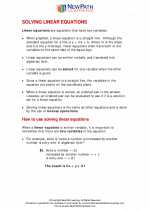 Solving linear equations
Solving linear equations  Worksheet/Answer key
Worksheet/Answer key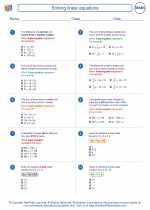 Solving linear equations
Solving linear equations  Worksheet/Answer key
Worksheet/Answer key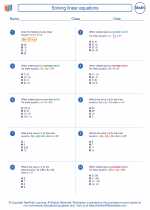 Solving linear equations
Solving linear equations  Worksheet/Answer key
Worksheet/Answer key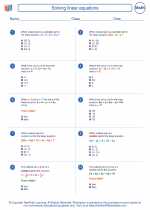 Solving linear equations
Solving linear equations  Worksheet/Answer key
Worksheet/Answer key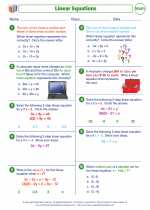 Solving linear equations
Solving linear equations  Worksheet/Answer key
Worksheet/Answer key Solving linear equations
Solving linear equations 

 Worksheet/Answer key
Worksheet/Answer key
 Worksheet/Answer key
Worksheet/Answer key
 Worksheet/Answer key
Worksheet/Answer key
 Worksheet/Answer key
Worksheet/Answer key
 Worksheet/Answer key
Worksheet/Answer key

The resources above cover the following skills:
Algebra (NCTM)
Represent and analyze mathematical situations and structures using algebraic symbols.
Use symbolic algebra to represent situations and to solve problems, especially those that involve linear relationships.